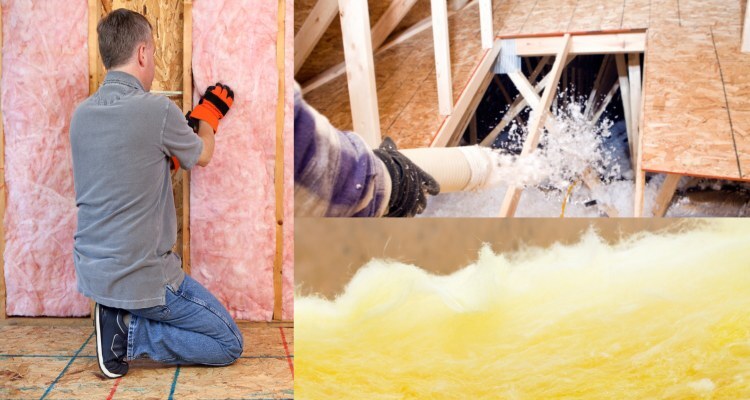- 1-905-452-8193
- Contact Us
- Member Login
- Get Listed Today
- 220,911 members

When it comes to home insulation, several options are available. It's essential to choose the right type of insulation for your home to increase its energy efficiency and comfort. The insulation companies in Virginia Beach can help you make your home more energy-efficient. In this article, we will discuss the different types of home insulation and their pros and cons.
One of the most common types of insulation used in homes is fiberglass insulation. It is made of glass fibers and is available in batts or rolls. It is affordable, easy to install, and provides excellent insulation. However, it can be irritating to the skin, eyes, and lungs, and it can lose its insulation properties if it gets wet.
Affordable and readily available
Easy to install
Irritating to the skin, eyes, and lungs
Loses its insulation properties if it gets wet
Cellulose insulation is made of recycled newspaper and is blown into the attic or walls. It is a cost-effective insulation option, provides excellent insulation, and is environmentally friendly. However, it can settle over time, reducing its insulation properties.
Made of recycled materials
Provides excellent insulation
Can settle over time, reducing its insulation properties
Requires professional installation
Spray foam insulation is a popular insulation choice due to its superior insulating properties. It is made of a liquid that is sprayed onto walls or roofs, which then expands to create an airtight seal. It provides excellent insulation, improves indoor air quality, and reduces noise. However, it is more expensive than other insulation types and requires professional installation.
Provides superior insulation
Improves indoor air quality
More expensive than other insulation types
Requires professional installation
Radiant barrier insulation is installed in the attic and reflects radiant heat away from the home. It is an excellent choice for hot climates, as it helps reduce the heat that enters the home. However, it is not a standalone insulation and needs to be installed alongside other insulation types.
Decreases the heat that enters the home
Ideal for hot climates
Not a standalone insulation type
Requires professional installation
Reflective insulation is similar to radiant barrier insulation and is also installed in the attic. It reflects heat away from the home, making it an excellent choice for hot climates. However, it does not provide as much insulation as other types of insulation.
Reflects heat away from the home
Ideal for hot climates
Provides less insulation than other types of insulation
Requires professional installation.
In conclusion, choosing the right type of home insulation is crucial for improving your home's energy efficiency, comfort, and indoor air quality. While there are several types of insulation available, each has its pros and cons. It's essential to consider your home's specific needs and consult with insulation companies in Virginia Beach to determine the best insulation type for your home. Attic insulation is also a crucial part of home insulation, as it is one of the main areas where heat enters and escapes the home. With the right insulation, you can make your home more energy-efficient, comfortable, and environmentally friendly.
Visit https://universalinsulationdoctor.com/ to learn more.
